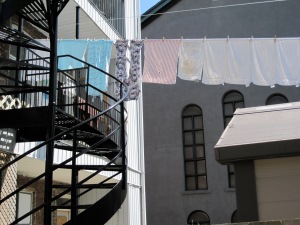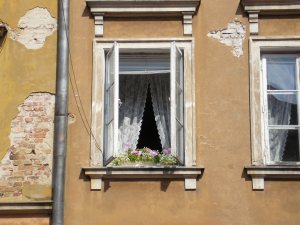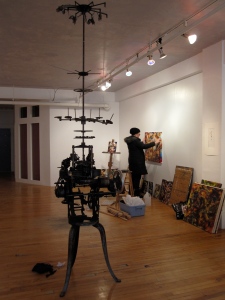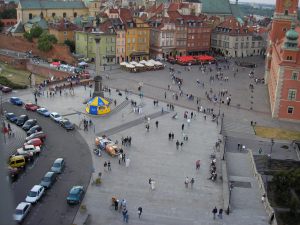
I was invited to participate in this little branch of a vast blog hop by the poet Susan Gillis, whose recent, wonderful collection The Rapids is, incidentally, on my list of “books I’d really like to delve into on my blog.” But I’m not yet ready to do it justice; I’m still letting it sink in. Susan also curates Concrete & River, a blog rich with poetry talk. You’ll find her blog hop entry here.
What am I working on?
Assignments from others: An essay about rereading a beloved book (there are almost too many to pick from!). A review of Chava Rosenfarb’s Exile at Last: Selected Poems. An introduction to a poetry anthology (I shall avoid revisiting Nicholson Baker’s The Anthologist during this phase.). Another review of a poetry collection: Summertime Swamp-Love, by Patricia Young. Stuff I assigned to myself: A memoir about a lost friend, and how both the friendship and the loss tints life afterward, and continues to, two decades on. A graphic-novel-in-poems (anyone got a better term for that?) with my partner-in-crime, artist Pauline Conley. Inspiration: The Great Fire of Main-à-dieu, Nova Scotia, 1976. Working title: Clarence the Welder.

How does my work differ from other work in its genre?
Aside from the fact that I can’t stop writing about clotheslines (see previous entry)? My nonfiction and poetry is not “out there” in terms of form or content, so to say how it differs means talking about voice. The voice in my work is, I hope, distinct: its cadences mine, its preoccupations particular to my history and personality. I also hope it’s natural and unfeigned. What I’m trying harder and harder to do, the older I get, is to do away with the tricks and filters, any temptations to get fancy, or hide within obliqueness, and just write what I mean to say—and to imagine my reader as a trusted friend who doesn’t need everything spelled out. I don’t want to throw readers, rather welcome them, give them a place in which they can recognize something from their own experience or in themselves, but to see that truth from a slightly different angle. The light is of a different quality, and therefore so, too, the sense of reality, the understanding, the perspective that light unveils.

Why do I write what I do?
Necessity. It’s a way of reporting on, clarifying and wondering over thoughts, questions, doubts, memories and emotions, tackling them straight on in the hope that the resulting text will be useful (maybe even entertaining!) to others as well. It’s also, I think, an effort to stop time, to hold something I’d prefer not to let go, or allow to fade. That could be an event, an idea, a person, a sighting, a sound. That method of holding, through articulation, offers another benefit when successful, which is to reveal at least a glimmer of why that thing matters so much—why it begs to be held. A friend once said, impatient with himself for the recurring impulse, that not every significant moment can or should be turned into a poem. I agreed with him, but I also believe that when a poem needs to happen, it will.

How does my writing process work?
It’s messy. I write big and pare back. I shape on the page. I seldom sit down knowing just what I need to say or how to say it: my mind is not so orderly. I’ll know a little part of it, or only the starting point. I must work out the rest as I go. Sometimes this is painstaking. I confuse myself. I get stuck. I get diverted by tangents—sometimes for years!

But with practice, experience, age, a better understanding of the need for patience, I’m now able to do some of the hard work in my head before writing. I no longer race to write down every thought; I trust that the relevant, important ideas—and even phrases—will stick, or resurface when the time is right. I can now see connections between narrative threads, objects, moments, long before writing: there’s a big-picture view, or at least a glimpse of the whole, that I’m allowed, which wasn’t on offer when I was younger. Still, my first draft of anything, be it essay, poem, or some other form, is generally a lumpy, mucky heap of far too much. Ninety percent of writing, for me, is revision. Usually, several revisions in is when things start getting good, when I really start enjoying myself, when I can see something emerging, inch by inch, cut by cut, that may actually prove worthwhile.
Next week on the blog hop:
Fiction writer Alice Zorn, author of Ruins & Relics and Arrhythmia. She writes on life, travels, writing and her Montreal neighbourhood (and translates Grimms’ fairy tales straight from the German!) at Rapunzel’s Hair.
Teacher and writer Siobhan Curious, whose amazing tour of the joys and tribulations of life at the front of the class can be found at Classroom as Microcosm.
Anita, thanks for both new blogs, the clothesline one and this one. Really really interesting and delightful.